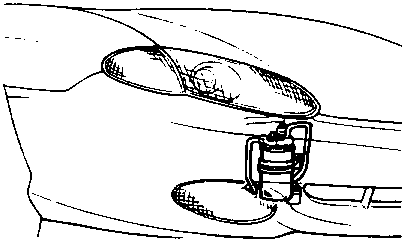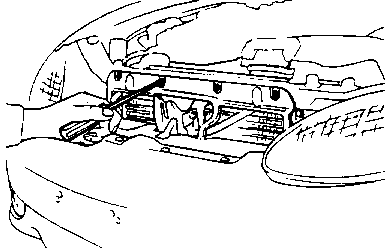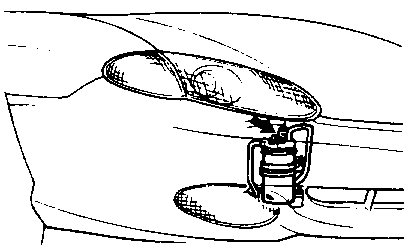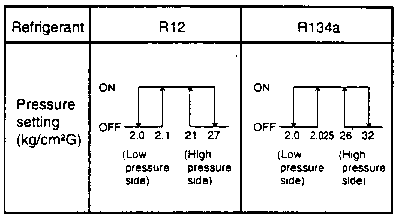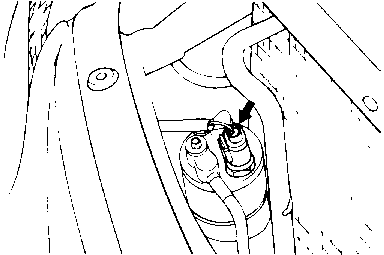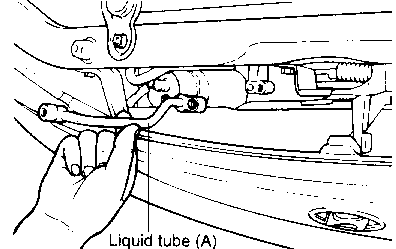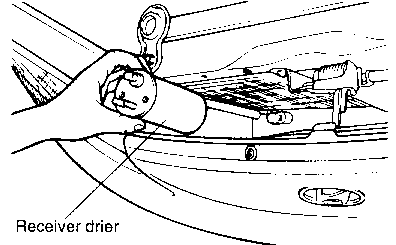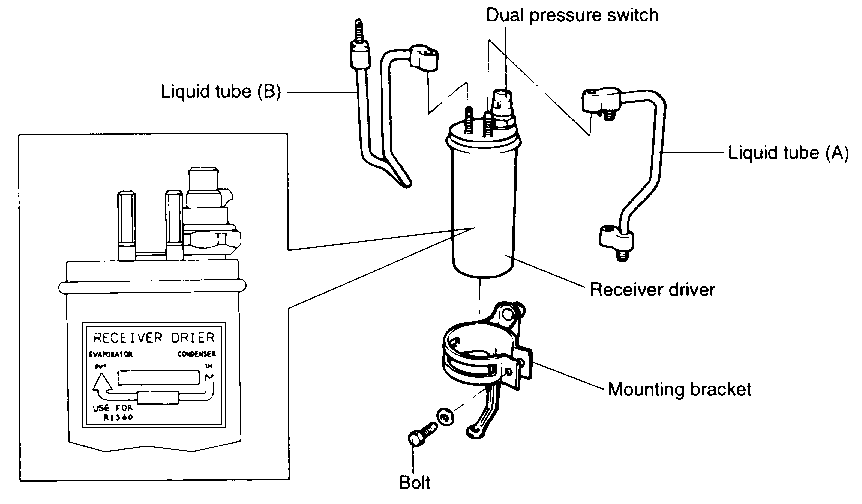R-12
|
The dual pressure switch is a combination of the low pressure switch (for checking the quantity of refrigerant) and the high pressure switch (for prevention of overheating). It is installed in the receiver, and when the pressure becomes approximately 200 kpa (28 psi) or lower, the compressor stops, thus preventing the compressor from being damaged by heat. When the pressure reaches 2,700 kpa (384 psi) or higher, the compressor stops, thus preventing overheating. There is generally no necessity for inspection; if, however, an unusual condition, such as non-operation of the compressor is encountered, check by following the procedures below.
|
R-134a
|
The dual pressure switch is a combination of the low pressure switch (for checking the quantity of refrigerant) and the high pressure switch (for prevention of overheating). It is installed in the receiver, and when the pressure becomes approximately 200 kpa (29 psi) or lower, the compressor stops, thus preventing the compressor from being damaged by heat. When the pressure reaches approximately 3,140 kpa (455 psi) or higher, the compressor stops, thus preventing overheating. There is generally no necessity for inspection; if, however, an unusual condition, such as non-operation of the compressor is encountered, check by following the procedures below.
|
